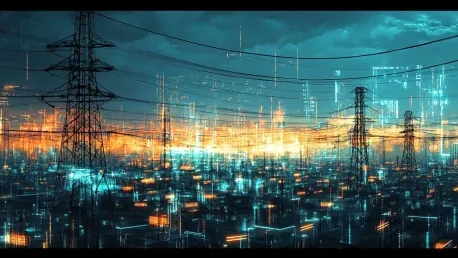As the United States charts its course through the 21st century, the nation finds itself grappling with a monumental challenge: the rapidly increasing demand for electricity juxtaposed against energy policies that are proving insufficient. This issue is precipitated by various dynamic factors, including the swift advancements in burgeoning industries like battery and semiconductor manufacturing, a resurgence in domestic supply chains, the widespread adoption of electric vehicles (EVs), and the explosive growth of data centers driven by artificial intelligence (AI). These technological and industrial evolutions are causing tremors throughout the energy sector, revealing significant gaps in the nation’s ability to meet future electricity needs.
In specific regions of the U.S., the projections are daunting. In Virginia, Dominion Power expects electricity demand to surge by an astonishing 85% within the next 15 years. Meanwhile, in California, PG&E forecasts a 70% upsurge, and New York’s grid operator predicts a 90% increase over the next two decades. These regional forecasts echo a national trend marked by the U.S. Department of Energy’s estimation that the country’s power demand will double by 2050. As these projections unfold, it becomes evident that the current trajectory of energy policies, especially those stringent measures spearheaded by the Environmental Protection Agency (EPA), might be exacerbating rather than resolving the crisis.
Strain on the Electric Grid and Economic Impact
The EPA’s strategies aimed at phasing out coal power plants by 2032 and imposing rigorous regulations on new baseload coal and natural gas power plants are at the center of criticism. These measures, intended to address environmental concerns, have an unintended counterproductive effect: they threaten to dismantle pivotal supports for grid reliability precisely when they are most needed. The looming risk is that an overstrained grid could fail, resulting in a higher likelihood of blackouts. American consumers are already experiencing the brunt of soaring electricity costs. According to Bank of America, the year-over-year inflation rate for U.S. electricity prices was 5.9% in May, a rise from 3.8% in January. Adding to the complications, the PJM power market, which serves 65 million Americans, saw capacity payments to power plants surge by 800%, signaling a market primed for power shortages and foreshadowing significant hikes in power bills for consumers.
California serves as a compelling case study in the challenges posed by renewable energy transitions. Over the past decade, some consumers have seen their power prices increase by as much as 82%, a stark illustration of the unsustainable trajectory of current energy policies for people on fixed incomes. The underlying message is clear: while the intent behind shifting towards renewable energy is positive, the implementation must be balanced to ensure the equitable distribution of affordable and reliable power. Instead, the execution has left many Americans grappling with the dual burdens of rising costs and uncertainty about the future stability of their electricity supply.
Navigating the Path Forward
As the United States navigates the 21st century, it’s confronting a significant challenge: the exploding demand for electricity coupled with inadequate energy policies. This problem stems from various dynamic factors, including rapid advancements in industries like battery and semiconductor manufacturing, the revival of domestic supply chains, the widespread adoption of electric vehicles (EVs), and the explosive growth of data centers powered by artificial intelligence (AI). These technological and industrial shifts are shaking up the energy sector, exposing serious gaps in the nation’s ability to meet future electricity needs.
In some U.S. regions, the outlook is particularly alarming. For instance, Dominion Power in Virginia anticipates an 85% surge in electricity demand within the next 15 years. In California, PG&E projects a 70% increase, while New York’s grid operator forecasts a 90% rise over the next two decades. Nationally, the U.S. Department of Energy estimates that power demand will double by 2050. As these projections become reality, it’s clear that current energy policies, particularly those enforced by the Environmental Protection Agency (EPA), might be worsening rather than alleviating the crisis.









